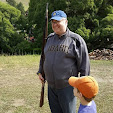Almost all my miniatures games over the past few years have used Commands and Colors Ancients. I have four complete armies for the system: Punic Wars Romans, Carthaginians, Marian Romans, and Gauls.
I have long wanted to game the Greco-Persian-Macedonian wars, and while I find the Greeks and Macedonians fun to paint, the Persians have always daunted me. I have put this off long enough. 2024 is the year I finish forces for Marathon, Thermopylae, Plataea, Granicus, Issus, and Gaugamela.
I bought an Old Glory Army membership and placed the first of many orders. I have always liked Old Glory figures, and the Persians look, to me at least, exactly as they should.
One of the frustrations in painting an Achaemenid Persian army is the near total lack of sources. What did they wear? How were they equipped? We have Herodotus and a few playwrights, and they do not offer much help to the miniatures painter. The Pompeii mosaic gives a limited impression of colors and clothing, but it is from hundreds of years after the Persians fell.
Did the infantry wear uniform colors? No idea. Did their shield patterns match within a unit? No one knows. The immortals probably wore some sort of uniform, but the bulk of the army may have looked more like a feudal levy.
My army will be my best attempt at portraying the field army of an imperial power. I choose to field infantry with uniform clothing and shields. I choose to go with the pastel color palette of the Pompeii mosaic. Feel free to quibble with my interpretation of the very limited sources!
Commands and Colors scenarios depict most Persian infantry as "auxilia." In game terms, auxilia are a hybrid between skirmishers and battle line infantry. They can move quickly, engage in missile combat, and fight with a limited capability in close combat. That sounds exactly how most historians view Persian sparabara, who used a front line of spearmen to shield a rear line of archers.
In the official scenarios, the maximum number of Persian auxilia needed are nine. I had enough to field twelve units, so I went ahead and did that. Here we have 192 figures in shades of sherbet, ready to take on the Greek and Macedonian heavy infantry. Brave fellows.












































































